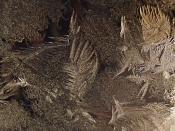Introduction
Purpose
My purpose of this experiment is to find out how crystals are formed and how they are classified. For a long time, I've been interested in crystals, so I've decided this experiment would be perfect for me!
Crystallography
The study of the growth, shape, and geometric characteristics of crystals is called crystallography. When the conditions are right, each chemical element and compound can crystallize in a definite and characteristic form.
Thirty-two classes of crystals are theoretically possible, almost all common minerals fall into one of about twelve classes, and some classes have never been seen. The thirty-two classes are grouped into six crystal systems, based on the length and position of the crystal axes. Crystal axes are imaginary lines passing through the center of the crystals. Minerals in each system share certain proportions and crystal form and many important optical properties.
The six crystal systems are very important to a mineralogists and geologists; specification of the system is necessary in the description of each crystal system.
Isometric
This system comprises crystals with three axes, all perpendicular to one another and all have equal length.
Tetragonal
This system comprises crystals with three axes, all perpendicular to one another; but only two are equal in length.
Orthorhombic
This system comprises crystals with three mutually perpendicular axes, all of different lengths.
Monoclinic
This system comprises crystals with three axes, all unequal in length, two o which are not perpendicular to another, but both of which are perpendicular to the third.
Triclinic
This system comprises crystals with three axes, all unequal in length and is not perpendicular to one another.
Hexagonal
This system comprises crystals with four axes. Three of these axes are in a single plane, proportionally spaced, and of equal length. The fourth axis is perpendicular to the other three.


